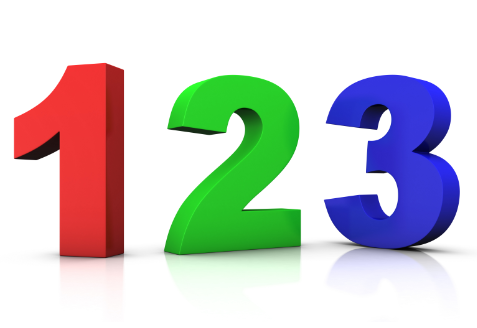Click on a concept below to try a sample question
Free, Printable Math
Worksheets for at-home Practice

Download this informative guide to learn how to best support your first grader as they learn and master important first grade math concepts.
Download Now 25+ Free Practice Worksheet questionsClick on a concept below to try a sample question
A stated objective of Common Core State Standards (CCSS) is to standardize academic guidelines nationwide. In other words, what first graders learn in math in one state should be the same as what students of the same age are learning in another state. The curricula may vary between these two states, but the general concepts behind them are similar. This approach is intended to replace wildly differing guidelines among different states, thus eliminating (in theory) inconsistent test scores and other metrics that gauge student success.
An increased focus on math would seem to include a wider variety of topics and concepts being taught at every grade level, including first grade. However, CCSS actually calls for fewer topics at each grade level. The Common Core approach (which is clearly influenced by “Singapore Math”—an educational initiative that promotes mastery instead of memorization) goes against many state standards. Many states mandate a “mile-wide, inch-deep” curriculum in which children are taught so much in a relatively short time span, that they aren’t effectively becoming proficient in the concepts they truly need to understand to succeed at the next level. Hence, CCSS works to establish an incredibly thorough foundation not only for the math concepts in future grades, but also toward practical application for a lifetime.
For first grade, Common Core’s focus is on addition and subtraction— the basic math facts they will use throughout their education and beyond—as well as learning how to measure without necessarily using a ruler, and how to understand shapes. Ultimately, this focus will enable children to develop rigor in real life situations by developing a base of conceptual understanding and procedural fluency.

Thinkster worksheets for first grade help students develop skills in four critical areas outlined by CCSS:
First graders likely will be encountering much more math than in the previous school year (especially at schools without full-day kindergarten). The extra time will be put to good use as students work toward mastering basic addition and subtraction skills and developing a better understanding on how numbers work. Here are the four critical areas that Common Core brings to first grade math:
 Addition and Subtraction
Addition and Subtraction
Students will use a variety of methods and strategies to gain a full comprehension of the concepts behind addition and subtraction. Approaches include length-based models (e.g. stringing cubes together to form lengths), counting to add or subtract (e.g., 5 + 3 = 8 is the same as counting 3 past 5), and making tens (e.g., with 8 + 7, count 2 more from 8 to get 10, and 2 fewer than 7 to get 5, then just add 10 + 5 to get the answer). Ultimately, the goal for kids is to become proficient with addition and subtraction within 20.
 Place Value
Place Value
The concept of two-digit numbers as a certain amount of tens and ones is introduced and emphasized (because understanding place value now will ease the transition to three and four-digit numbers, and beyond, in future grades). Students will learn to add within 100 and subtract by multiples of 10.
 Linear Measurement
Linear Measurement
Students will learn the meaning and processes behind measurement, and they will be taught iteration (mentally building the length of an object using equal-size units) and how to compare the measurements of objects.
 Shapes
Shapes
First graders will work with shapes to understand their relationships. For example, students will learn that two triangles can be placed together to form a quadrilateral. Concepts such as congruence and symmetry are first introduced.

From the four critical areas of focus discussed in the previous section, Common Core also further clarifies the skills first graders should know by the end of the school year. For example, the fluency requirement at this level is adding and subtracting within 10. The four topics presented here, taken directly from CCSS itself, include some specifics on what kids will be taught in first grade.

 Operations and Algebraic Thinking
Operations and Algebraic Thinking
• Represent and solve problems involving addition and subtraction. Equations with answers within 20 are emphasized, with strategies including adding to, taking from, putting together, taking apart, and comparing. Students will also solve word problems by applying these skills.
• Understand and apply properties of operations and the relationship between addition and subtraction. The commutative property of addition (5 + 9 is the same as 9 + 5) and associative property of addition (3 + 5 + 7 is the same as adding 3 + 7 to get 10, then adding 10 + 5) are explained. On the subtraction side, students will learn the answer to 9 - 5 is the same as adding that number to 5 to get 9.
• Add and subtract within 20. This is simply more emphasis on basic arithmetic facts with answers of less than 20. Students will understand the relationship between counting and addition/subtraction, as well as learn to use strategies to help them add (for example, arriving at an easier equation to solve a problem such as turning 4 + 6 into 4 + 4 + 2).
• Work with addition and subtraction equations. Students will learn about the equals sign and apply that knowledge to true/false questions (e.g., true or false: 3 + 6 = 6 + 3). Also, first graders will solve problems in which, a part of an equation will be unknown, such as in 2 +__=4 (solve for the blank).
 Number Operations in Base 10
Number Operations in Base 10
• Extend the counting sequence. Students will learn to count, read, and write numbers up to 120.
Understand place value. As already mentioned, students will apply place value principles for years to come, all the way through high school. In first grade, they will learn:
• Use place value understanding and properties to add and subtract. While learning how to add a two-digit number to a one-digit number or 10, students will come to an understanding that they will add tens and tens together, then ones and ones, and sometimes have to compose a new ten to reach the answer (e.g., 36 + 42 = 30 + 40 = 70, 6 + 2 = 8. First graders will also be taught how to mentally add 10 to a two-digit number and how to subtract multiples of 10 (within 90; e.g., 40 - 20 = 20).


 Measurement and Data
Measurement and Data
• Measure lengths directly and by iterating length units. Students will order three objects by length and indirectly compare the length of two objects by using the third. Also, first graders will express the length of an object in units by using copies of a shorter object (for example, by measuring a long Lego block with smaller, equal-sized Legos).
• Tell and write time. Students will tell and write time, on analog and digital clocks, down to the half-hour.
• Represent and interpret data. First graders will be taught to ask and answer questions on the total number of data points, how many of something are in a category, and how many more or less are in one category than another.
 Geometry
Geometry
• Reason with shapes and their attributes. The difference between defining attributes (a square has four sides) versus a non-defining attribute (that square is blue!) will be taught. Students will also compose two-dimensional and three-dimensional shapes and partition circles and rectangles into two or four equal shares, learning the terms halves, fourths and quarters along the way.

Some of parents’ trepidation with Common Core isn’t so much with the guidelines themselves, but with the testing now aligned with CCSS via local math curricula. Standardized testing was stressful for students and parents before; with the ongoing Common Core implementation, many families simply don’t know what to expect.
Fortunately, CCSS does not have to be that stressful, for you or your first grader. Here are some tips to help your children succeed with Common Core math:

 Be informed; be involved
Be informed; be involved
If Common Core concerns you, intrigues you, or confuses you, don’t hesitate to learn as much about it—in your child’s classroom, at your kids’ school, and on a national level. Talk with teachers, principals, and other parents. Seek advice on how you can help your kids, and yourself, navigate CCSS math. If you want to take further action, become involved with PTA or other organizations and committees that deal with your school’s curriculum. The more you know, the more, ultimately, you can help your child.
 Give them some real-world math
Give them some real-world math
A basic tenet of Common Core is to apply math principles to real-world situations. Why not start now? Give your child math problems when you are out and about—the store, in traffic, the park, and so on. For example, if your first grader plays soccer, have her separately count the players on your team and on the other team and tell you how many kids there are total.
 Take time to learn what they are learning
Take time to learn what they are learning
You might look at a worksheet your child brings home and think, “This isn’t the math I’m used to.” Because Common Core emphasizes understanding the process of arriving at an answer, your child may be taught additional ways to fry a mathematical egg, so to speak. Instead of shunning these approaches, learn them for yourself. Once you comprehend these additional methods, you will be better able to help your child comprehend them as well.
 Encourage them to show their work
Encourage them to show their work
This suggestion can be read two ways. First, students will be encouraged to show how they arrived at an answer, especially within Common Core. Second, ask your children to show you their homework, particularly the challenging stuff. Explaining how a problem is solved is a basic CCSS tenet, so if your kids can be confident in explaining their work to you, they will carry that confidence into the classroom when the teacher asks for those same explanations.
 Seek more help if necessary
Seek more help if necessary
If your first grader is struggling with the new math standards, talk with his or her teacher first. You then might want to seek outside resources to help your child. Several online resources provide math help, including worksheets and sample tests that conform to Common Core standards. Tutoring might be an option you consider as well. Innovative iPad-based math programs have emerged that combine the personalized approach of a tutor with today’s technology. This revolutionary approach also may feature a curriculum based on Common Core, thus ensuring your child’s learning at home is aligned with what he or she is learning at school.
See up to a 90% Improvement in Math Scores Within 3 Months.
Start 7-Day Free Trial